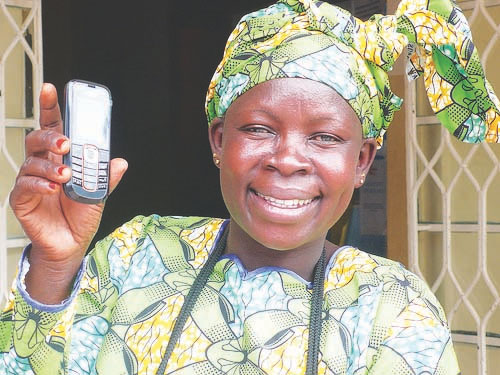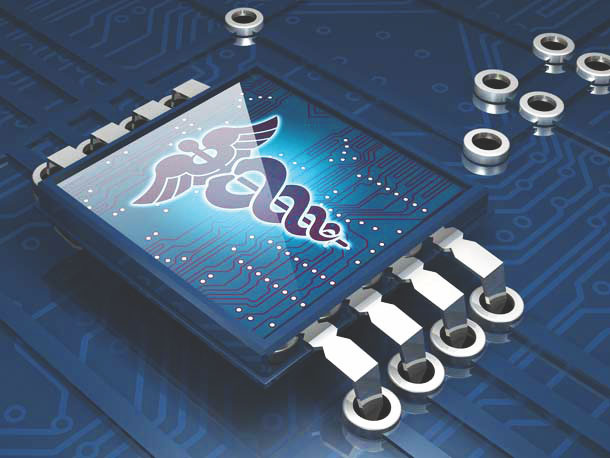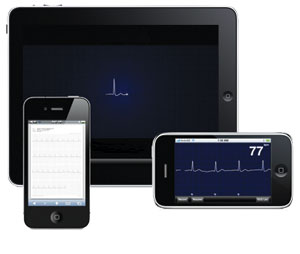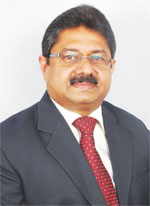
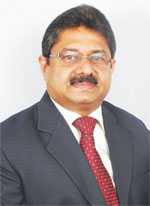 mHealth has got a window of opportunities that technology will open especially for the rural India. With smart devices, intelligent features and affordable prices, mobile industry will surely demand their due share of attention from the healthcare technology providers. Commander Girish Kumar VSM (Retd), Practice Head, India “ Healthcare & Life Sciences, HP Enterprise Services tells us more on the optimism around mHealth in India
mHealth has got a window of opportunities that technology will open especially for the rural India. With smart devices, intelligent features and affordable prices, mobile industry will surely demand their due share of attention from the healthcare technology providers. Commander Girish Kumar VSM (Retd), Practice Head, India “ Healthcare & Life Sciences, HP Enterprise Services tells us more on the optimism around mHealth in India
What is the most exciting aspect of the telemedicine market in India?

Currently, there are two waves of excitement around telemedicine, one is based on the technology-centric approach to telemedicine and the other from the end-user perspective which includes patients and practioners and the impact of technology.
It is evident that telemedicine is a technology and ICT dependent service and there is a lot of exciting technologies that have arrived into the healthcare industry “ but as far as telemedicine is concerned it is undoubtedly the mobile sector that has got everyones attention and has successfully penetrated in India. This has also become a medium for us as healthcare technology providers ride on the wave and include mobile as a device to transact tele-medicine services including the healthcare operatives that otherwise would have been an ordeal. So, the mobile devices have definitely brought-in mobility into the healthcare spectrum and a promise of wider reach than ever before.
Earlier there were fixed lines housed in special centers that use to transact for the purpose of patients reference. Today, with the convergence of many technologies and capabilities that are easily achievable on the mobile platform, mHealth is poised to revolutionise the way we look at tele-medicine use and penetration in India. The penetration of mobiles has also blurred the rural-urban divide and the on-going research is exploring how a landline telephone will be able to transact i.e. send and receive significant volume of tele-medicine related information.

If one were to have a patients standpoint and also the providers of care using tele-medicine, the excitement is because of the user friendly features and affordability of mobile phones. Doctors now have a faster platform for cross consultations for peer reviews of case history and diagnostic procedures and treatment. Thus, these three trends that are conjuring-up a mood of optimism with regards to tele-health includes affordability, penetration and convergence of technologies on the mobile platform for anytime anywhere communications between the doctor and the patient.
Role of innovation in telemedicine and how farther can this work?
The role of innovation is more on the medical technology, equipment and gadgets side. Earlier, in a telemedicine centre, most of the patient data ECG, blood reports, etc were recorded on analog machines and then carried out on a manual data entry report in the software provided to them.
Today, with the advent of mobility devices in the healthcare segment, most of these data sets can easily be shared and transferred on devices designed to be used in the rugged conditions of the rural India. One such device is the digital stethoscope that has become popular among tele-medicine practioners.
A lot of innovation is thus needed in building medical gadgets that are capable of working across many device inter-faces within the tele-medicine network so that the usability of the platform of tele-medicine becomes much easier and data is shared much faster. Also the time constraint in terms of volume of patients that each doctor examines is addressed, as he uses a lot of intelligent and automated gadgets to connect and communicate with patients.
A lot of innovation is thus needed in building medical gadgets that are capable of working across many device inter-faces within the tele-medicine network so that the usability of the platform of tele-medicine becomes much easier
What are your key recommendations to the government for faster growth of the tele-medicine in India?
If one were to map the growth of tele-medicine in India, one would observe that it has developed in patches. There has been an absence of a central agency “ that can act as an umbrella body for telemedicine in India. Thus we first need a central body in the government that undertakes the mandate of tele-health in the country. We also need a dedicated policy on the telemedicine in India that provides guidelines and framework to weave the various activities that has been undertaken by different stakeholders in healthcare so far and also take the programme ahead to the next phase.
In my opinion, another strategy that needs to be focused by government of India to have a well-planned framework that outlines the facility of a tele-medicine centre in each PHC in India. And there has to be a network created between the center and the district level hospital to support a better quality of expertise and specialty advice to reach patients. Usually the specialist level opinion and expertise are not available at the PHC level and they are not able to deliver quality of healthcare delivery at par with the tertiary care hospitals to the rural India. However, connecting them through tele-health network can solve that.
There should be a nationwide network of telemedicine, where all stakeholders can share the resource pool, especially for the rural India wherein the specialist cover is many kilometers away. And my third suggestion would be of fund allocation as there is a need for a dedicated fund from the government for the support and scaling-up of telemedicine network. The government should encourage more PPP models for the growth of the telemedicine network, and there should be more involvement of the private player so as to ensure that the momentum of telehealth remains faster and wider in rural India.
Your future prediction on the growth of the tele-medicine market in India and what are the key investments made by your company in this regard?
HP has taken the first step towards supporting telemedicine by joining the mHealth bandwagon. We have already pledged that as part of our social innovation commitment, we will contribute funds for research and propagation of mobile health which is going to be the platform for telemedicine. Secondly, we are poised to two projects under our funding scheme that operates in Trivandrum and Madurai involving cancer-related care and psychiatric-care respectively. We have also invested into HP Labs, and it aims to develop solutions which can cut across the communication channels and promote telemedicine to strengthen the rural India to get a better access and quality of healthcare. So we have a strong inclination towards telemedicine not only in terms of the technology but also affordability for the end users.
Be a part of Elets Collaborative Initiatives. Join Us for Upcoming Events and explore business opportunities. Like us on Facebook , connect with us on LinkedIn and follow us on Twitter , Instagram.







